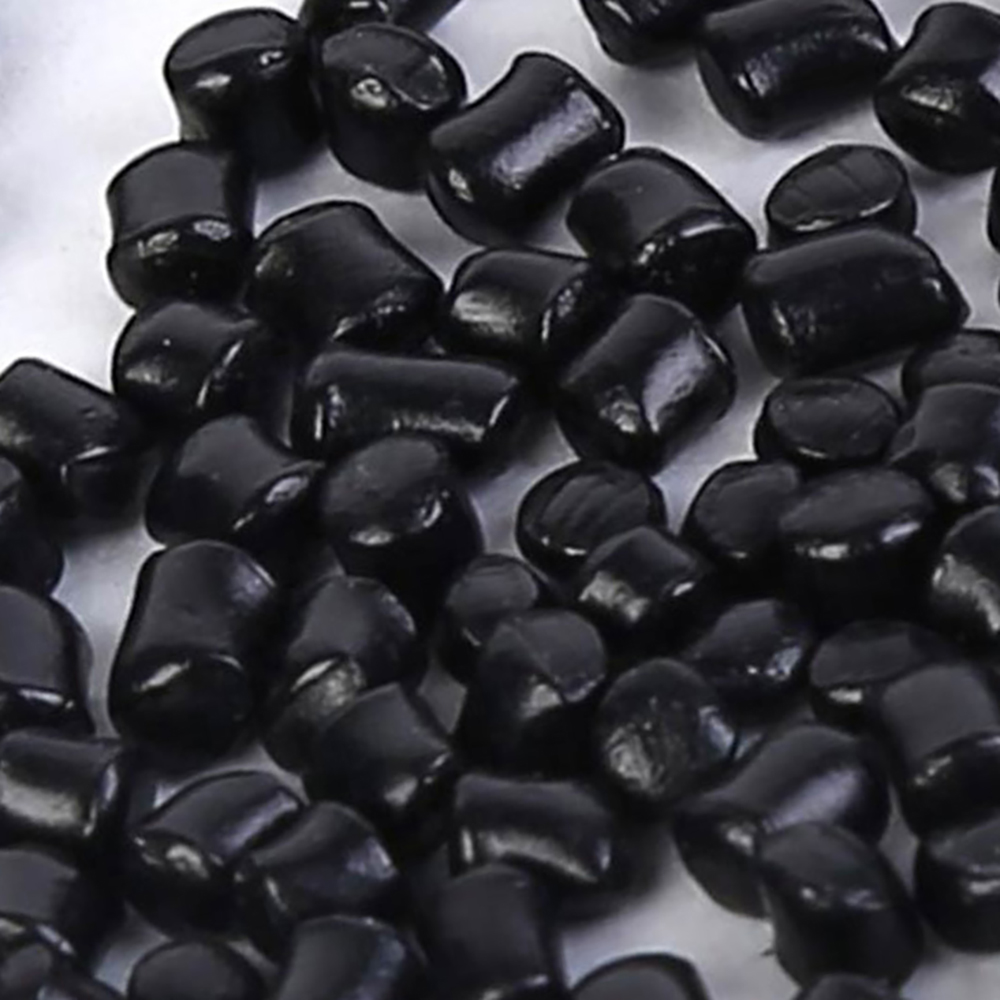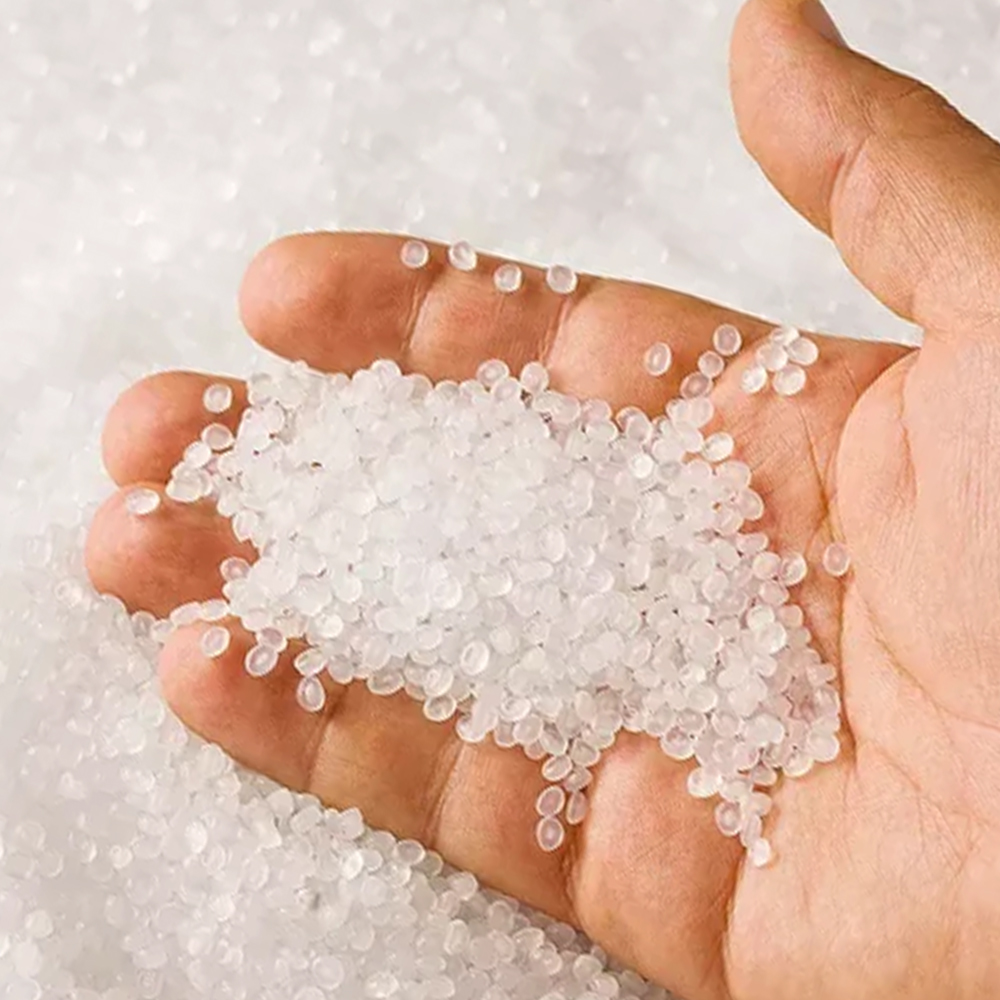
مناسب ماسٹر بیچ کا انتخاب
جب تقریباً ہر تھرمو پلاسٹک کو رنگنے یا اضافی خصوصیات فراہم کرنے کی بات آتی ہے، تو ماسٹر بیچ کا انتخاب ایک واضح انتخاب ہے۔
جیسا کہ ویکیپیڈیا پر وضاحت کی گئی ہے، ماسٹر بیچ روغن یا اضافی اشیاء کا ایک مرتکز مرکب ہے جو حرارتی عمل کے دوران کیریئر رال میں لپیٹ دیا جاتا ہے۔ ایک بار ٹھنڈا ہونے کے بعد، اسے دانے داروں کی شکل دی جاتی ہے۔ یہ مینوفیکچررز کو پیداوار کے عمل کے دوران خام پولیمر مواد میں رنگ یا خصوصیات کو مؤثر طریقے سے شامل کرنے کی اجازت دیتا ہے۔
ماسٹر بیچ کو پہلے سے مرکب مواد کے مقابلے میں کم ذخیرہ کرنے کی جگہ کی ضرورت ہوتی ہے، جو مینوفیکچررز کو پیداوار میں لچک برقرار رکھتے ہوئے اسٹاک ہولڈنگ کو کم کرنے کے قابل بناتا ہے۔
ماسٹر بیچ میں پگمنٹس اور ایڈیٹیو پہلے سے منتشر ہوتے ہیں، جو پورے پولیمر میں یکساں تقسیم کو یقینی بناتے ہیں اور حتمی پروڈکٹ کے معیار کو بڑھاتے ہیں۔
باریک پاؤڈر ایڈیٹیو کے برعکس، ماسٹر بیچ دھول سے پاک ہے، صحت کے خطرات کو کم کرتا ہے اور کام کا صاف ماحول پیدا کرتا ہے۔ یہ ہینڈلنگ کو محفوظ بناتا ہے اور صفائی کی ضروریات کو کم کرتا ہے۔
ماسٹر بیچ سپلائرز رنگ کی تشکیل اور مستقل مزاجی کی ذمہ داری لیتے ہیں، آزمائش اور غلطی کی ایڈجسٹمنٹ کی ضرورت کو ختم کرتے ہیں۔ یہ پیداوار کے بیچوں میں دہرائے جانے والے نتائج کو یقینی بناتا ہے۔
Masterbatch سامان کی صفائی اور پیداوار کے درمیان منتقلی سے منسلک وقت اور اخراجات کو کم کرتا ہے، جس سے یہ لاگت سے موثر ہوتا ہے۔
ماسٹر بیچ اپنی مرضی کے مطابق رنگوں اور خصوصیات کی ایک وسیع رینج پیش کرتا ہے۔ مکمل طور پر مرکب مواد کے برعکس، یہ رنگ اور فنکشنل additives میں تغیر پیدا کرنے کے لیے زیادہ لچک فراہم کرتا ہے۔
ماسٹر بیچ استعمال کرنے والی فیکٹریاں کم درجے کے پولیمر کا ذخیرہ کر سکتی ہیں اور قیمتی قدرتی پولیمر بڑی تعداد میں خرید سکتی ہیں۔
ماسٹر بیچ اکثر بہت زیادہ مرتکز ہوتا ہے، جس سے تھوڑی مقدار میں مہنگی اضافی اشیاء کے لیے درست خوراک کو قابل بنایا جاتا ہے۔ مثال کے طور پر، ماسٹر بیچ کا ایک 25 کلوگرام بیگ ایک ٹن قدرتی پولیمر تک پروسیس کر سکتا ہے۔
ٹھوس ماسٹر بیچ سالوینٹ سے پاک ہے، سالوینٹ کے بخارات کے بارے میں خدشات کو ختم کرتا ہے۔ یہ دیگر اضافی شکلوں کے مقابلے میں طویل شیلف زندگی کو یقینی بناتا ہے۔
ماسٹر بیچ کی تاثیر ان عوامل پر منحصر ہے جیسے:
ماسٹر بیچ کی پیداوار میں دو بنیادی مراحل شامل ہیں:
کلیدی عناصر جو ماسٹر بیچ کے معیار کو متاثر کرتے ہیں ان میں فارمولیشن، خام مال اور استعمال شدہ آلات شامل ہیں۔
Iplastar مختلف ایپلی کیشنز کے لیے ماسٹر بیچز کی متنوع رینج فراہم کرتا ہے، جو کسٹمر کی ضروریات کو پورا کرنے کے لیے تیار کیا گیا ہے۔ ان میں شامل ہیں:
ماسٹر بیچ بڑے پیمانے پر صنعتوں میں استعمال ہوتا ہے، بشمول:
ماسٹر بیچ کے فوائد سے فائدہ اٹھا کر، صنعتیں پلاسٹک کی پیداوار میں زیادہ کارکردگی، استعداد اور معیار حاصل کر سکتی ہیں۔
ہمارے بلاگ سے ماسٹر بیچ انڈسٹری میں مزید معلومات اور رجحانات جانیں۔

جب تقریباً ہر تھرمو پلاسٹک کو رنگنے یا اضافی خصوصیات فراہم کرنے کی بات آتی ہے، تو ماسٹر بیچ کا انتخاب ایک واضح انتخاب ہے۔

کیبل انڈسٹری میں، کاربن بلیک ماسٹر بیچ کو شامل کرنا کیبل شیتھوں کی چالکتا اور رنگ کی گہرائی کو بہت زیادہ متاثر کرتا ہے۔ یہاں اس اثر و رسوخ کا گہرائی سے تجزیہ کیا گیا ہے اور بہترین کارکردگی حاصل کرنے کے لیے ان عوامل کو متوازن کرنے کی سفارشات ہیں۔

ماسٹر بیچز، پلاسٹک کی صنعت میں ٹھوس اضافی چیزیں، رنگ اور ساخت سے لے کر پائیداری تک، پلاسٹک کی مصنوعات کو مخصوص خصوصیات فراہم کرنے میں اہم کردار ادا کرتی ہیں۔
©2023۔ ماسٹر بیچ مینوفیکچرر تمام حقوق محفوظ ہیں۔
ہماری ٹیم 20 منٹ میں بہترین پیشکش بھیج دیگی۔